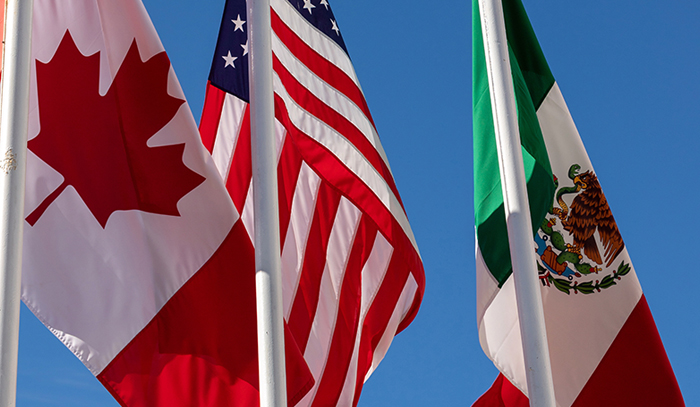What does Mexico’s Energy Policy and the USMCA complaints mean for business in Mexico?

The Office of the United States Trade Representative (USTR) announced on July 19, 2022, the request to address the disputes under Chapter 31 of the United States-Mexico-Canada Agreement (USMCA). The reason is the public policy and regulatory actions of the Mexican government that have negatively impacted U.S. companies in the energy sector for the benefit of the Federal Electricity Commission (CFE) and Petróleos Mexicanos (Pemex). A day later, Canada indicated that it supports the U.S. request and would launch its own meetings to address the issue.
The U.S. government alleges that the current administration’s energy policy, deployed as of 2019, violates the rules to which the Mexican government committed itself in the USMCA agreement, particularly regarding market access, investment, and state-owned enterprises.
If no agreement is reached on the direction of Mexico’s energy policy and its implementation, the next step would be the establishment of a dispute resolution panel, in which the Mexican government could risk facing trade retaliation.
What are the reasons for the request?
Specifically, the USTR highlights as a reason the change in the order of dispatch of electric energy to benefit CFE plants over private generators, established in the reform of the Electricity Industry Law of March 2021. The arguments also include the revocation and rejection of new electricity generation and oil storage permits, as well as restrictions on the operation of service stations and fuel imports by the Energy Regulatory Commission (CRE) and the Ministry of Energy (SENER).
In addition, it questions the Regulation of December 2019 that extends the deadline only to Pemex to comply with the Official Mexican Standard that establishes the maximum amount of sulfur content in automotive diesel (NOM-016-CRE-2016), as well as the June 2022 request from SENER to the National Center for Natural Gas Control (Cenagas) and the CRE to force users of natural gas transport service to buy the hydrocarbons, in order to support the subsidiaries of CFE.
What provisions are being highlighted?
Among the violations of the Agreement noted by the USTR are those related to the following chapters:
- National treatment and market access (2.3 and 2.11), which determines that countries must grant national treatment to goods from other member countries.
- Investment (14.4), which vetoes changes to regulations of sufficient magnitude to interfere with expectations originally provided to investors.
- State enterprises (22.5.2), which provides that state enterprises must accord no less favorable treatment to domestic or foreign private enterprises.
- Publication and administration (29.3), which states that the parties must implement their national legislation in a uniform, impartial and reasonable manner.
What are the next steps?
The request for these meetings triggered a process that lasts a maximum of 75 days to resolve the matter (around Oct 2022), in which the start of consultations must take place no later than 30 days after the formal request.
If no agreement is reached during the consultation period, a dispute resolution panel may be requested. The panel would be composed of 3 or 5 panelists chosen from a list pre-approved by the three member countries of the Treaty. Once the members are defined, the panel will have a maximum period of 150 days to issue an initial report and then up to 30 days to present the final arbitration decision, depending on which countries agree on a solution to the dispute, which would happen around April or May 2023.
During the process of resolving the energy dispute, the Ministry of Economy will oversee coordinating the defense of the Mexican government. The first working group to design Mexico’s defense began last Tuesday, July 26, looking for a line of argument, which would be announced in the coming days.
If there is no agreement, what would happen?
If Mexico does not reach an agreement on the request for consultations with the United States and Canada, Mexico would face a dispute panel in which it risks receiving trade retaliation and could be credited with sanctions or tariffs on the products it exports to compensate, according to the rules of the USMCA. Some preliminary calculations by expert analysts place it in the range of 30 billion dollars, only on the side of the US, which represents 2.3% of the country’s Gross Domestic Product.
There are two ways to see how these two countries would seek to compensate for the damage, either by (i) seeking to generate a cost to Mexico or (ii) by implementing actions against the flow of trade for that amount.
Considering that the U.S. buys about $385 billion of Mexican products annually, and if that country seeks to raise the $30 billion, it could mean imposing an 8% tariff on virtually all imports it makes of products made in Mexico. With that increase, they would undoubtedly cease to be competitive, and therefore attractive, for American consumers, who would simply look for alternative suppliers that offer them and or cheaper products.
The second possibility would be to apply tariffs to 8% of the total universe of imports from Mexico that represents a trade flow of $30 billion dollars.
Beyond the issue of tariffs, Mexico would be questioned as a country that does not comply with the international treaties it has signed, collapsing the confidence it had in the absence of legal certainty, which would immediately create a negative impact on the future of investments in Mexico.
If tariff sanctions were to be imposed, it would be a disaster for the country’s economy, undoubtedly impacting the export industry with a high probability of recession, a very possible depreciation in the exchange rate, a greater stagnation in private investment, an increase in capital outflows, which would be topped by a decrease in the rating of the country’s sovereign debt. All of which could have a profound impact on the economy and people.
A risky chess game!
This dispute is not about whose hydrocarbons are used, nor is it about questioning the sovereignty of a country, much less the fate of the homeland; it is simply a trade dispute over specific issues that have their origin in the energy policies implemented by the administration.
From our point of view, without being an expert in economics, the USMCA is very clear, and it does not seem that there are many plausible arguments to defend the energy policy of the current administration. Let’s hope that the dispute will be resolved during the consultation process, where people will continue to comply with the Treaty and thus avoid reaching the dispute settlement panel.
If so, we could hope to see investments maintained and even reverse the trends that we observed just last month in the latest edition of PRODESEN, where it clearly indicated that the country is not in a position to meet its emission reduction goals in the medium term, not because of a technical issue, but because of the lack of economic resources, since these are priorities to strengthen the productive enterprises of the State, which is why they are not granting the generation permits that are required to meet the growth in demand and consumption of electrical energy.
As we have been pointing out on previous occasions, its availability is increasingly limited, so if you are looking to meet your ESG goals, we recommend that you contact one of our representatives at Acclaim Energy to help you develop a customized strategic plan that will help you comply, save, and mitigate risks. Visit our website www.acclaimenergy.com.mx to request a meeting to be scheduled.



